 Neil Wiernik's third full length album is playful with an overall calmatmosphere, despite what the murky title suggests. The mood of theearly morning hours is perfectly captured, as different layers of soundin a steady flow match the various tones of shades. Silhouette-likestructures appear hazy at first glance but slowly come into shape asthe mind focuses on them. Besides the album's brilliant opener,"Brittle Sticks," which features a casual female vocal, all otherpieces are purely electronic instrumentals. Tracks 2-5 run in acontinuous flow, giving the impression of a live in-studio recording.Following that, "Post Shifting Ground" is a remix of the preceding"Shifting Ground Water." The early 80's beat box rim shot sound ispushed even more in the forefront but before it get's really disturbingit suddenly ends. In this abrupt silence, NAW places the straightforward "Two A.M. Overcast," which is undoubtedly another high pointbefore "Foggy Autumn Dawn" closes the album in the tradition of classicBasic Channel 12" B-Sides. The double finale leaves me with a wish formore, and thus repeated plays are irresistable. While I usually preferalbums to be longer, 40 minutes of quality is always more desirablethan an album with lots of filler.
Neil Wiernik's third full length album is playful with an overall calmatmosphere, despite what the murky title suggests. The mood of theearly morning hours is perfectly captured, as different layers of soundin a steady flow match the various tones of shades. Silhouette-likestructures appear hazy at first glance but slowly come into shape asthe mind focuses on them. Besides the album's brilliant opener,"Brittle Sticks," which features a casual female vocal, all otherpieces are purely electronic instrumentals. Tracks 2-5 run in acontinuous flow, giving the impression of a live in-studio recording.Following that, "Post Shifting Ground" is a remix of the preceding"Shifting Ground Water." The early 80's beat box rim shot sound ispushed even more in the forefront but before it get's really disturbingit suddenly ends. In this abrupt silence, NAW places the straightforward "Two A.M. Overcast," which is undoubtedly another high pointbefore "Foggy Autumn Dawn" closes the album in the tradition of classicBasic Channel 12" B-Sides. The double finale leaves me with a wish formore, and thus repeated plays are irresistable. While I usually preferalbums to be longer, 40 minutes of quality is always more desirablethan an album with lots of filler. Neil Wiernik's third full length album is playful with an overall calmatmosphere, despite what the murky title suggests. The mood of theearly morning hours is perfectly captured, as different layers of soundin a steady flow match the various tones of shades. Silhouette-likestructures appear hazy at first glance but slowly come into shape asthe mind focuses on them. Besides the album's brilliant opener,"Brittle Sticks," which features a casual female vocal, all otherpieces are purely electronic instrumentals. Tracks 2-5 run in acontinuous flow, giving the impression of a live in-studio recording.Following that, "Post Shifting Ground" is a remix of the preceding"Shifting Ground Water." The early 80's beat box rim shot sound ispushed even more in the forefront but before it get's really disturbingit suddenly ends. In this abrupt silence, NAW places the straightforward "Two A.M. Overcast," which is undoubtedly another high pointbefore "Foggy Autumn Dawn" closes the album in the tradition of classicBasic Channel 12" B-Sides. The double finale leaves me with a wish formore, and thus repeated plays are irresistable. While I usually preferalbums to be longer, 40 minutes of quality is always more desirablethan an album with lots of filler.
Neil Wiernik's third full length album is playful with an overall calmatmosphere, despite what the murky title suggests. The mood of theearly morning hours is perfectly captured, as different layers of soundin a steady flow match the various tones of shades. Silhouette-likestructures appear hazy at first glance but slowly come into shape asthe mind focuses on them. Besides the album's brilliant opener,"Brittle Sticks," which features a casual female vocal, all otherpieces are purely electronic instrumentals. Tracks 2-5 run in acontinuous flow, giving the impression of a live in-studio recording.Following that, "Post Shifting Ground" is a remix of the preceding"Shifting Ground Water." The early 80's beat box rim shot sound ispushed even more in the forefront but before it get's really disturbingit suddenly ends. In this abrupt silence, NAW places the straightforward "Two A.M. Overcast," which is undoubtedly another high pointbefore "Foggy Autumn Dawn" closes the album in the tradition of classicBasic Channel 12" B-Sides. The double finale leaves me with a wish formore, and thus repeated plays are irresistable. While I usually preferalbums to be longer, 40 minutes of quality is always more desirablethan an album with lots of filler. After several weeks of struggle trying to make any sense of this LiefElggren / Kevin Drumm collaboration I reluctantly looked for clues inwhat promotional blurb I could locate. I was rewarded with "criticswill find it shocking easy to find angles and write reviews forTriangles." But despite such discouraging irony it eventually hit methat this is a 70s concept album in the grand tradition things like "AnElectric Storm," "200 Motels" and "Meddle." Endearingly, the only rockmusic on the album is reminiscent of "A Pillow of Winds" but that'swere the stylistic similarities stop. The source material is modern andkaleidoscopic: electronic, clicky digital, noise, sine tones, drones,organ washes, short-wave radio excerpts and various samples. What makesthis a psychedelic concept album is the two uninterrupted sides ofmind-trip ? episodic and monumental with trance inducing static ordevelopmental phases disconnected by bizarre, sometimes jarringtransitions. With that model in mind Triangles is a very pleasing albumand makes perfect sense, in the sense that a psychedelic concept albumdoesn't make sense except in a highly elliptical sense. As anintellectual sound-art object, on the other hand, it makes no sense. Infact, the more I listen to it now, the more nostalgic I become forthose teenage, herbal enhanced headphone listening sessions of the 70s.And take care not to play Triangles on a cheesy stereo; until I playedit in the living room, I thought half the album was clever Cagiansilence while there is in fact nothing of the kind.
After several weeks of struggle trying to make any sense of this LiefElggren / Kevin Drumm collaboration I reluctantly looked for clues inwhat promotional blurb I could locate. I was rewarded with "criticswill find it shocking easy to find angles and write reviews forTriangles." But despite such discouraging irony it eventually hit methat this is a 70s concept album in the grand tradition things like "AnElectric Storm," "200 Motels" and "Meddle." Endearingly, the only rockmusic on the album is reminiscent of "A Pillow of Winds" but that'swere the stylistic similarities stop. The source material is modern andkaleidoscopic: electronic, clicky digital, noise, sine tones, drones,organ washes, short-wave radio excerpts and various samples. What makesthis a psychedelic concept album is the two uninterrupted sides ofmind-trip ? episodic and monumental with trance inducing static ordevelopmental phases disconnected by bizarre, sometimes jarringtransitions. With that model in mind Triangles is a very pleasing albumand makes perfect sense, in the sense that a psychedelic concept albumdoesn't make sense except in a highly elliptical sense. As anintellectual sound-art object, on the other hand, it makes no sense. Infact, the more I listen to it now, the more nostalgic I become forthose teenage, herbal enhanced headphone listening sessions of the 70s.And take care not to play Triangles on a cheesy stereo; until I playedit in the living room, I thought half the album was clever Cagiansilence while there is in fact nothing of the kind.  What initially piqued my interest in Wilco and Yankee Hotel Foxtrotwas learning of Jim O?Rourke?s collaboration with frontman Jeff Tweedyon the production side of the disc. That and the fact that group wasnow employing the choice talents of Glenn Kotche, who also just happensto be O?Rourke?s drummer. As Loose Fur, this trio have recentlyreleased a collection of five vocal tunes and one instrumental whichhighlight the varied, yet equally brilliant songwriting andmusicianship of the two bandleaders and their sideman. "Laminated Cat"opens the disc with some laid back analog synths bubbling underneathdriving percussion and a blend of acoustic and electric guitars thatweave and mesh throughout, building into a wall of distortion and noisethat ring the tune out. From there, it doesn?t take too long to hear akind of formula that appears on some of the disc?s other songs: playthrough a great tune that?s well written, beautifully sung and nicelyarranged, then jam out on some of the changes for the next three tofour minutes with some improv/noise-type guitar embellishments and aplethora of percussion. Of course, this is also part of what makes thisdisc so appealing as the "we're here to play" attitude conveys anexcitement that can't help but be contagious. More laid back tracksbased around the acoustic guitar such as "You Were Wrong" showcase somestrong songwriting that comes across with a nice, earthy feel anddoesn't really require a whole lot of decorating thanks in part toKotche's time feel. The wry and edgy lyrics of O?Rourke?s two vocaltunes are complimented by three from Tweedy, whose imagery is evocativeand quite poetic. This strong collaboration is ripe with greatsongwriting, interesting arrangements and instrumentation (you willhear banjo) with a cohesion that shows just how much these guys aremasters of their craft.
What initially piqued my interest in Wilco and Yankee Hotel Foxtrotwas learning of Jim O?Rourke?s collaboration with frontman Jeff Tweedyon the production side of the disc. That and the fact that group wasnow employing the choice talents of Glenn Kotche, who also just happensto be O?Rourke?s drummer. As Loose Fur, this trio have recentlyreleased a collection of five vocal tunes and one instrumental whichhighlight the varied, yet equally brilliant songwriting andmusicianship of the two bandleaders and their sideman. "Laminated Cat"opens the disc with some laid back analog synths bubbling underneathdriving percussion and a blend of acoustic and electric guitars thatweave and mesh throughout, building into a wall of distortion and noisethat ring the tune out. From there, it doesn?t take too long to hear akind of formula that appears on some of the disc?s other songs: playthrough a great tune that?s well written, beautifully sung and nicelyarranged, then jam out on some of the changes for the next three tofour minutes with some improv/noise-type guitar embellishments and aplethora of percussion. Of course, this is also part of what makes thisdisc so appealing as the "we're here to play" attitude conveys anexcitement that can't help but be contagious. More laid back tracksbased around the acoustic guitar such as "You Were Wrong" showcase somestrong songwriting that comes across with a nice, earthy feel anddoesn't really require a whole lot of decorating thanks in part toKotche's time feel. The wry and edgy lyrics of O?Rourke?s two vocaltunes are complimented by three from Tweedy, whose imagery is evocativeand quite poetic. This strong collaboration is ripe with greatsongwriting, interesting arrangements and instrumentation (you willhear banjo) with a cohesion that shows just how much these guys aremasters of their craft. 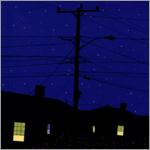 While grand flourishes and touches of color may capture your eye, asolid foundation is key to making everything work together. Subtle,almost unseen nuances set the scene for everything built upon it. Thekey is finding the right balance, to not be so subtle as to beunnoticed. On Helms' latest release, McCarthy, the band delves into those latent shades, at times almost getting lost, in order to describe themselves in a different way. McCarthyseems to evoke the moments between sleep and waking, when the conscioushasn't fully kicked in and the unconscious hasn't fully departed.Thoughts and images appear and at once evaporate, failing to make adistinct impression, only leaving a faint trace behind. Much of McCarthyevokes this ephemeral nature, each song almost blurring with the next."Singer and guitarist Sean McCarthy spills out his lyrics in a languid,sleepy manner never fully rising above the midtempo drone of bassistTina Helms and drummer Dan McCarthy. McCarthy seems to aspireto twilight, the arrangements blinking like stars peaking throughfading sunlight, establishing a melody or a riff and then shifting itup and down, back and forth, as on "It Takes Skin to Win." While thistechnique works for Helms as on the aforementioned track, it can attimes become tedious. Helms is most successful when they lurch out oftheir grogginess as on the soaring opener track, "The Hypochondriac'sLast Words," which allows vocalist Sean to show some dynamics in hisvoice. Deviations are welcome, and when "The Ten Thousand Things"arrives, it's not a moment too soon. The rhythm section chugging alongsolidly, punctuated by a thrusting crescendo of guitar that stands outagainst the albums shy demeanor. "Robots Are Great, But Are We ReadyFor Them to Dance on Their Own?" succeeds in building a compelling ideawith only a simple repeated riff, imbued with urgency and energy. Thealbum closes with the unfortunate "Cornish, New Hampshire," dragging onwith a meandering recitation of items in a drawer, daring the listenerto endure the song's seven minute duration. Despite their individualissues, the songs on McCarthy work well together to create astarry, midnight blue atmosphere that makes the album a pleasantlisten. The concern is not on specifics, but on a broader,impressionistic expression of sense and feeling. While the thoughts maydisappear as soon as we open our eyes, the feelings stay with us, thevague memories of sensation that merely hint and never tell.
While grand flourishes and touches of color may capture your eye, asolid foundation is key to making everything work together. Subtle,almost unseen nuances set the scene for everything built upon it. Thekey is finding the right balance, to not be so subtle as to beunnoticed. On Helms' latest release, McCarthy, the band delves into those latent shades, at times almost getting lost, in order to describe themselves in a different way. McCarthyseems to evoke the moments between sleep and waking, when the conscioushasn't fully kicked in and the unconscious hasn't fully departed.Thoughts and images appear and at once evaporate, failing to make adistinct impression, only leaving a faint trace behind. Much of McCarthyevokes this ephemeral nature, each song almost blurring with the next."Singer and guitarist Sean McCarthy spills out his lyrics in a languid,sleepy manner never fully rising above the midtempo drone of bassistTina Helms and drummer Dan McCarthy. McCarthy seems to aspireto twilight, the arrangements blinking like stars peaking throughfading sunlight, establishing a melody or a riff and then shifting itup and down, back and forth, as on "It Takes Skin to Win." While thistechnique works for Helms as on the aforementioned track, it can attimes become tedious. Helms is most successful when they lurch out oftheir grogginess as on the soaring opener track, "The Hypochondriac'sLast Words," which allows vocalist Sean to show some dynamics in hisvoice. Deviations are welcome, and when "The Ten Thousand Things"arrives, it's not a moment too soon. The rhythm section chugging alongsolidly, punctuated by a thrusting crescendo of guitar that stands outagainst the albums shy demeanor. "Robots Are Great, But Are We ReadyFor Them to Dance on Their Own?" succeeds in building a compelling ideawith only a simple repeated riff, imbued with urgency and energy. Thealbum closes with the unfortunate "Cornish, New Hampshire," dragging onwith a meandering recitation of items in a drawer, daring the listenerto endure the song's seven minute duration. Despite their individualissues, the songs on McCarthy work well together to create astarry, midnight blue atmosphere that makes the album a pleasantlisten. The concern is not on specifics, but on a broader,impressionistic expression of sense and feeling. While the thoughts maydisappear as soon as we open our eyes, the feelings stay with us, thevague memories of sensation that merely hint and never tell.  This is the second Go-Betweens album since their resuscitation threeyears ago, and the band's sound is still surprisingly consistent.During their twenty-year existence, the Go-Betweens have been thepedagogues of jangly pop, ably instructing in their art and edifyingcountless bands who have followed in their footsteps but never hopedever to overtake the teacher as would be normal in the course of thementor/apprentice relationship. The Go-Betweens maintain theirmentorship not by any tyrannical stranglehold, but rather by aperfection of pop which other bands seem unable to master (or evensometimes muster). It usually takes me a few listens through to pickout my best Go-Betweens songs from any one album, and this record is nodifferent. In the end, the differences between the songs which I likeand the ones which I just listen to are subtle; they amount to acertain inflection here, a deeper crooning there. What I can sense fromthese post-reunification albums is that the inflections and crooningshave become less intense and less intoned, for whatever reason (I don'tthink it is so much age as it is growth). As a result, fewer songs jumpout at me. The first half of Bright Yellow Bright Orangebest approaches the glory of older releases. "Poison in the Walls" willnot only recall older songs like "Part Company," but can show what Imean when I talk about the minimized inflection: the elongatedpronunciation of "sometimes" is the hallmark of great Go-Betweenssongs, but in this case is slightly less energetic than I would haveexpected or than would have been recorded circa 1984. The surface ofthe next song, "Mrs. Morgan," screams to be compared to Lou Reed, buteven his songs were never so pleasantly lackadaisical as this. Despiteall of its good, this record simply seems too summery and relaxed for aproper appreciation presently. The anxiety of winter frustratingly dogsthe songs on this perhaps prematurely released album. 'Bright YellowBright Orange' implies the setting in which it should ideally belistened to: in the bright sun-filled day of the early summer when thewarmth makes its first cadenced march back into the air, or, if you aresomewhat more headstrong and jumpy, maybe at the falling of the firstspring rain.
This is the second Go-Betweens album since their resuscitation threeyears ago, and the band's sound is still surprisingly consistent.During their twenty-year existence, the Go-Betweens have been thepedagogues of jangly pop, ably instructing in their art and edifyingcountless bands who have followed in their footsteps but never hopedever to overtake the teacher as would be normal in the course of thementor/apprentice relationship. The Go-Betweens maintain theirmentorship not by any tyrannical stranglehold, but rather by aperfection of pop which other bands seem unable to master (or evensometimes muster). It usually takes me a few listens through to pickout my best Go-Betweens songs from any one album, and this record is nodifferent. In the end, the differences between the songs which I likeand the ones which I just listen to are subtle; they amount to acertain inflection here, a deeper crooning there. What I can sense fromthese post-reunification albums is that the inflections and crooningshave become less intense and less intoned, for whatever reason (I don'tthink it is so much age as it is growth). As a result, fewer songs jumpout at me. The first half of Bright Yellow Bright Orangebest approaches the glory of older releases. "Poison in the Walls" willnot only recall older songs like "Part Company," but can show what Imean when I talk about the minimized inflection: the elongatedpronunciation of "sometimes" is the hallmark of great Go-Betweenssongs, but in this case is slightly less energetic than I would haveexpected or than would have been recorded circa 1984. The surface ofthe next song, "Mrs. Morgan," screams to be compared to Lou Reed, buteven his songs were never so pleasantly lackadaisical as this. Despiteall of its good, this record simply seems too summery and relaxed for aproper appreciation presently. The anxiety of winter frustratingly dogsthe songs on this perhaps prematurely released album. 'Bright YellowBright Orange' implies the setting in which it should ideally belistened to: in the bright sun-filled day of the early summer when thewarmth makes its first cadenced march back into the air, or, if you aresomewhat more headstrong and jumpy, maybe at the falling of the firstspring rain. The BBC Radiophonic Workshop's theme to the Doctor Who series firstaired in 1963, and I'm willing to bet that some, if not all, of thefuture members of the Human League were watching and listening veryclosely. Those spine-tingling washes of synthesizers and alien metallicclangs must have seemed pretty mindblowing to a group of "blind youth"growing up in impoverished Sheffield. Lap dissolve to nearly 15 yearslater, and Phillip Oakey, Martyn Ware and Ian Marsh have formed TheFuture, soon to be rechristened the Human League. While fully revelingin the punk attitude and political urgency of their contemporaries,Human League's music always sounded a little different, theircollective unconscious memory of that Doctor Who theme having pushedthem towards the formation of an all electronic group. Not drums, bassand guitars augmented by synthesizers, mind you. Rather, The HumanLeague were one of the first electronic purists; they used exclusivelysynthesizers and drum machines. What could be more standoffish and punkthan that? From the beginning, Human League had a keen talent foruptempo songs and catchy melodies that set them apart from fellowSheffield bands like Cabaret Voltaire and 23 Skidoo. The Human Leaguewere harboring a desire to make the world's greatest pop record.Electronic pop will never save the world, it's true, but listening tothese Human League re-issues after 20 years of musical developments isan eye-opening experience. Pop music like the Human League's isresistant to musical modes and trends, and if you submit to itspleasures, it is timeless and perfect. - Jonathan Dean
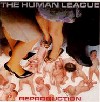 1979's Reproductionis the first full-length LP by The Human League, following some 12"singles and EPs released the year before. The reissue treatment fullyremasters and restores the sound, as well as adding loads ofsupplemental material, including the ultra-rare The Dignity of Labour EP and their first single Being Boiled. Reproductionfinds the group in pristine form, matching dark, futuristic lyrics withmechanized beats, icy synth melodies and keyboard swooshes. PhilOakey's lyrics elaborate on his childish, science-fiction obsessionwith an apocalyptic view of the future. The second track "Circus ofDeath" is a rambling, surreal narrative about a future holocaustperpetrated by narcotized clowns. Fans of early Gary Numan classicssuch as "Down in the Park" will appreciate this album. All of theelements of the latter day, chart-topping Human League are present, butthe album maintains a consistently arch, clinical distance from thelistener. This is only enhanced by Oakey's wry, detached wit andpassionless delivery. One of Human League's best songs is here, thestrangely upbeat "Empire State Human," a song about avarice and thedesire to attain superhuman powers, set against a relentlessproto-electro beat. By far the strangest track, "Morale," begins withsome ambient synthesizer arpeggios, reminiscent of Tangerine Dream.Philip Oakey pipes in with some mournful lyrics, and the song slowlysegues into an absurdly overproduced cover of The Righteous Brothers'"You've Lost That Loving Feeling." I'm not sure what the League werethinking here, but it somehow works. The Dignity of Labourfunctions as a four-part tribute to early electronic pioneers likeMorton Subotnick, Raymond Scott and Bernard Parmegiani. It's completelyinstrumental, and consists of a series of musique concrete soundscapes.As such, it is the most avant-garde recording that The Human Leagueever released. Tacked onto the end of this re-release is The HumanLeague's first single, "Being Boiled (Fast Version)." I won't go into adescription of this song as it is has popped up on at least 20compilations in just the past year. This version has the exact sametempo as every other version of the song I've heard, so I'm not surewhat makes this a "fast" version, however. Reproduction is essential listening for anyone getting into The Human League or the Sheffield post-punk scene.
1979's Reproductionis the first full-length LP by The Human League, following some 12"singles and EPs released the year before. The reissue treatment fullyremasters and restores the sound, as well as adding loads ofsupplemental material, including the ultra-rare The Dignity of Labour EP and their first single Being Boiled. Reproductionfinds the group in pristine form, matching dark, futuristic lyrics withmechanized beats, icy synth melodies and keyboard swooshes. PhilOakey's lyrics elaborate on his childish, science-fiction obsessionwith an apocalyptic view of the future. The second track "Circus ofDeath" is a rambling, surreal narrative about a future holocaustperpetrated by narcotized clowns. Fans of early Gary Numan classicssuch as "Down in the Park" will appreciate this album. All of theelements of the latter day, chart-topping Human League are present, butthe album maintains a consistently arch, clinical distance from thelistener. This is only enhanced by Oakey's wry, detached wit andpassionless delivery. One of Human League's best songs is here, thestrangely upbeat "Empire State Human," a song about avarice and thedesire to attain superhuman powers, set against a relentlessproto-electro beat. By far the strangest track, "Morale," begins withsome ambient synthesizer arpeggios, reminiscent of Tangerine Dream.Philip Oakey pipes in with some mournful lyrics, and the song slowlysegues into an absurdly overproduced cover of The Righteous Brothers'"You've Lost That Loving Feeling." I'm not sure what the League werethinking here, but it somehow works. The Dignity of Labourfunctions as a four-part tribute to early electronic pioneers likeMorton Subotnick, Raymond Scott and Bernard Parmegiani. It's completelyinstrumental, and consists of a series of musique concrete soundscapes.As such, it is the most avant-garde recording that The Human Leagueever released. Tacked onto the end of this re-release is The HumanLeague's first single, "Being Boiled (Fast Version)." I won't go into adescription of this song as it is has popped up on at least 20compilations in just the past year. This version has the exact sametempo as every other version of the song I've heard, so I'm not surewhat makes this a "fast" version, however. Reproduction is essential listening for anyone getting into The Human League or the Sheffield post-punk scene.
samples:
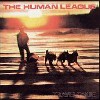 Travelogue is truly a transitional effort, containing both the Kubrickian, technology-obsessed sound that dominated Reproduction, and a healthy dose of the clever, infectious pop that would characterize Dare.The album kicks off with its best song, "The Black Hit of Space," atruly funny/scary song about a 12" from the future that sucks all ofits listeners into a black hole. The music on this track is remeniscentof a lot of the formulaic industrial-style electro and EBM thatdominated the 80's and early 90's. The Human League were pretty muchthe first on the block with this sound, before it had become a hopelessclich?. "Only After Dark" comes on like an electrop Beach Boys song,with its bouncy rhythm and fun vocal harmonies. The rest of the albumis a hit-or-miss affair. Most of the tracks are flawlessly arranged andproduced, but the songwriting is not nearly as strong as the songs on Reproduction or Dare."Being Boiled" also makes an appearance on this album, but it has beenreinvisioned as a hyperactive disco-fied Georgio Moroder track.There are seven extra tracks on this re-issue, most of them fairlydisposable, but fun nonetheless. Who could resist the wackiness oftheir roboticized glam-rock medley of Gary Glitter's "Rock n' Roll" andIggy Pop's "Nightclubbing"? The League also pay homage to theirchildhood science fiction obsession on "Tom Baker," a tribute toeveryone's favorite actor in the role of Doctor Who.
Travelogue is truly a transitional effort, containing both the Kubrickian, technology-obsessed sound that dominated Reproduction, and a healthy dose of the clever, infectious pop that would characterize Dare.The album kicks off with its best song, "The Black Hit of Space," atruly funny/scary song about a 12" from the future that sucks all ofits listeners into a black hole. The music on this track is remeniscentof a lot of the formulaic industrial-style electro and EBM thatdominated the 80's and early 90's. The Human League were pretty muchthe first on the block with this sound, before it had become a hopelessclich?. "Only After Dark" comes on like an electrop Beach Boys song,with its bouncy rhythm and fun vocal harmonies. The rest of the albumis a hit-or-miss affair. Most of the tracks are flawlessly arranged andproduced, but the songwriting is not nearly as strong as the songs on Reproduction or Dare."Being Boiled" also makes an appearance on this album, but it has beenreinvisioned as a hyperactive disco-fied Georgio Moroder track.There are seven extra tracks on this re-issue, most of them fairlydisposable, but fun nonetheless. Who could resist the wackiness oftheir roboticized glam-rock medley of Gary Glitter's "Rock n' Roll" andIggy Pop's "Nightclubbing"? The League also pay homage to theirchildhood science fiction obsession on "Tom Baker," a tribute toeveryone's favorite actor in the role of Doctor Who.
samples:
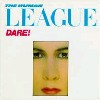 In my humble opinion, Dareis one of the greatest pop albums of all time, and for me it representsthe absolute zenith of the new wave electropop of the early 80's. It isessential listening for fans of the so-called "modern" pop of MagneticFields, The Aluminum Group or any of the new overabundant crop of"electroclash" groups like Ladytron or Soviet. The new digital popmusic characterized by groups like Lali Puna, The Postal Service andTarwater has also been informed by The Human League's unparalleledclassic. Released in 1981, The Human League have by this time lost twoof their founding members, Ian Marsh and Martyn Ware, who left to formthe new wave duo Heaven 17. With Marsh and Ware's departure, HumanLeague have put aside all of the cyber-punk posturing, to focusexclusively on making ten superbly realized, perfect pop songs. Whatresulted is the Human League's masterpiece, one of the rare albumswhere each and every track is a great song in its own right. PhilipOakey's lyrics contain decidedly more "human" themes this time around,with some very grown-up songs about lost love, the modern world, murderand "the law." The production is a true marvel, gleaming and seamless."The Things That Dreams are Made Of" kicks off the record with abeautiful synth melody and flawless drum programming. Soon, Oakey isreading off an inspired list of the things that his dreams are made of:"New York, ice cream, TV, travel, good times, Johnny, Joey, Dee Dee,good times...". Witty, urbane lyrics and brilliant pop hooks abound onthis record. Things take a rather disturbing turn with the somber,darkwave track "Seconds," which is as dead serious as The Human Leagueget. The album ends with The Human League's biggest hit, and also oneof their best songs, "Don't You Want Me," with its he said/she saidlyrics and infectiously catchy chorus. If you thought this was justmindless 80's flashback music, listen again. As a bonus with Caroline'sreissue, the entire Love and Dancing LP has been included.Originally credited to The League Unlimited Orchestra (in a tribute toBarry White's instrumental side-project), Love and Dancing is one of the first examples of a true remix album. Seven tracks from Dareand one extra track are specially remixed by producer Martin Rushent,whose liberal use of echo and a complement of wacky sound effects andintrumental fills is immediately reminiscent of the early dub approachto remixing. Love and Dancing is quite a sought-after rarity on LP, so to have these tracks available on this re-release is a real treat.
In my humble opinion, Dareis one of the greatest pop albums of all time, and for me it representsthe absolute zenith of the new wave electropop of the early 80's. It isessential listening for fans of the so-called "modern" pop of MagneticFields, The Aluminum Group or any of the new overabundant crop of"electroclash" groups like Ladytron or Soviet. The new digital popmusic characterized by groups like Lali Puna, The Postal Service andTarwater has also been informed by The Human League's unparalleledclassic. Released in 1981, The Human League have by this time lost twoof their founding members, Ian Marsh and Martyn Ware, who left to formthe new wave duo Heaven 17. With Marsh and Ware's departure, HumanLeague have put aside all of the cyber-punk posturing, to focusexclusively on making ten superbly realized, perfect pop songs. Whatresulted is the Human League's masterpiece, one of the rare albumswhere each and every track is a great song in its own right. PhilipOakey's lyrics contain decidedly more "human" themes this time around,with some very grown-up songs about lost love, the modern world, murderand "the law." The production is a true marvel, gleaming and seamless."The Things That Dreams are Made Of" kicks off the record with abeautiful synth melody and flawless drum programming. Soon, Oakey isreading off an inspired list of the things that his dreams are made of:"New York, ice cream, TV, travel, good times, Johnny, Joey, Dee Dee,good times...". Witty, urbane lyrics and brilliant pop hooks abound onthis record. Things take a rather disturbing turn with the somber,darkwave track "Seconds," which is as dead serious as The Human Leagueget. The album ends with The Human League's biggest hit, and also oneof their best songs, "Don't You Want Me," with its he said/she saidlyrics and infectiously catchy chorus. If you thought this was justmindless 80's flashback music, listen again. As a bonus with Caroline'sreissue, the entire Love and Dancing LP has been included.Originally credited to The League Unlimited Orchestra (in a tribute toBarry White's instrumental side-project), Love and Dancing is one of the first examples of a true remix album. Seven tracks from Dareand one extra track are specially remixed by producer Martin Rushent,whose liberal use of echo and a complement of wacky sound effects andintrumental fills is immediately reminiscent of the early dub approachto remixing. Love and Dancing is quite a sought-after rarity on LP, so to have these tracks available on this re-release is a real treat.
samples:
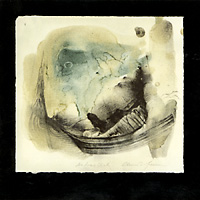 There are a number of reasons I love vinyl and strongly advocate vinyl usage: it actually -does- sound better for louder recordings with the whole signal-to-noise ratio thing; it comes with pretty big pictures if you're lucky; DJs (and those who think they are) can match beats, scrach and mix; and idiot roommates/junkie friends/random thieves rarely steal it as it's too big and heavy and used stores hate to sell used vinyl. However, let me go on record as saying that for quieter, more meditative recordings, I would prefer the usage of vinyl be very limited (if not eliminated). Every time a record is pulled out of its protective sleeve, thousands of microscopic particles collect—this is inevitable. With the more quiet recordings, the buildup of particles in the grooves is audibly evident. Mirror recordings are all lengthy soundscapes, gently combining musical and non-musical sound sources over long periods of time, with startlingly hypnotic effects. The difference in hearing a vinyl recording of the very first Mirror album released on record and the CD which was issued last week is absolutely amazing.
There are a number of reasons I love vinyl and strongly advocate vinyl usage: it actually -does- sound better for louder recordings with the whole signal-to-noise ratio thing; it comes with pretty big pictures if you're lucky; DJs (and those who think they are) can match beats, scrach and mix; and idiot roommates/junkie friends/random thieves rarely steal it as it's too big and heavy and used stores hate to sell used vinyl. However, let me go on record as saying that for quieter, more meditative recordings, I would prefer the usage of vinyl be very limited (if not eliminated). Every time a record is pulled out of its protective sleeve, thousands of microscopic particles collect—this is inevitable. With the more quiet recordings, the buildup of particles in the grooves is audibly evident. Mirror recordings are all lengthy soundscapes, gently combining musical and non-musical sound sources over long periods of time, with startlingly hypnotic effects. The difference in hearing a vinyl recording of the very first Mirror album released on record and the CD which was issued last week is absolutely amazing.
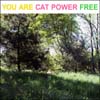 Without the assistance of over-the-top production, Chan Marshall has managed to craft one of the best albums I've heard this year. Her fifth album (sixth counting The Covers Record) is an amazing adventure through the sounds of loneliness, resignation, memory, and empowerment.
Without the assistance of over-the-top production, Chan Marshall has managed to craft one of the best albums I've heard this year. Her fifth album (sixth counting The Covers Record) is an amazing adventure through the sounds of loneliness, resignation, memory, and empowerment.
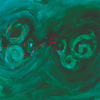 By now, the house lights have come up, the violinist has left with somegirl, the drummer is loading up his truck, and a lone guitaristcontinues on. If Dirty Three is appropriate for the late, late night,Mick Turner's music is most definitely appropriate for after, afterhours. Like other Mick Turner albums, Mothis a collection of numerous short but pretty pieces. This time around,there's 19 untitled parts. While it lacks the more solid songstructures with Tren Brothers and Bonnelvill releases, the expectantbeauty and variety has remained. Turner's instrument is simply theguitar and rarely something more. With the use a looping pedal, layersare added, removed, played with and reversed to make beautiful guitarcollages. Mike Krassner (Boxhead Ensemble, Edith Frost, Pinetop Seven),who co-produced the album joins up on piano by "Part 5," and appears onpiano for a number of parts thereafter, until, by "Part 18," (I thinkit's mis-labelled on the sleeve) they're joined on organ by RyanHembrey (also of the Boxhead Ensemble, Edith Frost, and Pinetop Seven).While the songs are delicate and gorgeous, I would probably recommendthis album only for existing fans, as other fantastic introductions toMick Turner's work would include music as Bonnelvill with Jessica Bileyon violin and piano or being fortunate enough to catch him live wherehe blissfully lets the songs drift for great lengths.
By now, the house lights have come up, the violinist has left with somegirl, the drummer is loading up his truck, and a lone guitaristcontinues on. If Dirty Three is appropriate for the late, late night,Mick Turner's music is most definitely appropriate for after, afterhours. Like other Mick Turner albums, Mothis a collection of numerous short but pretty pieces. This time around,there's 19 untitled parts. While it lacks the more solid songstructures with Tren Brothers and Bonnelvill releases, the expectantbeauty and variety has remained. Turner's instrument is simply theguitar and rarely something more. With the use a looping pedal, layersare added, removed, played with and reversed to make beautiful guitarcollages. Mike Krassner (Boxhead Ensemble, Edith Frost, Pinetop Seven),who co-produced the album joins up on piano by "Part 5," and appears onpiano for a number of parts thereafter, until, by "Part 18," (I thinkit's mis-labelled on the sleeve) they're joined on organ by RyanHembrey (also of the Boxhead Ensemble, Edith Frost, and Pinetop Seven).While the songs are delicate and gorgeous, I would probably recommendthis album only for existing fans, as other fantastic introductions toMick Turner's work would include music as Bonnelvill with Jessica Bileyon violin and piano or being fortunate enough to catch him live wherehe blissfully lets the songs drift for great lengths.  It's late and the bartender has announced last call. Tonight wasfantastic, as a number of singers graced the stage to stand in thespotlight, whether it was an ex junkie, a rich hick with a spookybeard, an overemotional freaky chick, or a cute male/female duo whoharmonize beautifully well. The parade of stars has come and gone. Thecrowd has been reduced to the small number of staff and a couple otherswho similarly are just trying to let the world stop spinning. On stage,the trio that sat in the back are still playing quietly. A triangularsymmetry is met by the lonely violinist, shuffling drummer andreflective guitarist. Only now does it make sense that while thesefolks can back up a variety of egos, their knowledge of, attraction to,and attention in which they pay each other is truly remarkable. WarrenEllis, Mick Turner, and Jim White have been playing as Dirty Three foryears, and with each album, it seems their bond grows stronger. Whetherit's with the driving force of "She Has No Strings," the quiet pianoand malleted-drums of "Long Way to Go with No Punch," or the pluckedviolins on "No Stranger Than That," they demonstrate that like anygreat ensemble, there is never one member who is more or less importantthan the other. Sure, they take turns leading the group here and there,like the unexpected fuzz guitar on "Rude (and then some slightreturn)," the mad drum solo on "No Sister Let Them Try and Follow," andthe multiple-layered violins on "She Lifted the Net." Dirty Three areone of the most reliably consistent bands and I have never been letdown by any of their records. Furthermore, it's always an extra specialtreat to see any of them live together, alone, or with others, and I'mhappy that it seems like they're always on the road in some band oranother.
It's late and the bartender has announced last call. Tonight wasfantastic, as a number of singers graced the stage to stand in thespotlight, whether it was an ex junkie, a rich hick with a spookybeard, an overemotional freaky chick, or a cute male/female duo whoharmonize beautifully well. The parade of stars has come and gone. Thecrowd has been reduced to the small number of staff and a couple otherswho similarly are just trying to let the world stop spinning. On stage,the trio that sat in the back are still playing quietly. A triangularsymmetry is met by the lonely violinist, shuffling drummer andreflective guitarist. Only now does it make sense that while thesefolks can back up a variety of egos, their knowledge of, attraction to,and attention in which they pay each other is truly remarkable. WarrenEllis, Mick Turner, and Jim White have been playing as Dirty Three foryears, and with each album, it seems their bond grows stronger. Whetherit's with the driving force of "She Has No Strings," the quiet pianoand malleted-drums of "Long Way to Go with No Punch," or the pluckedviolins on "No Stranger Than That," they demonstrate that like anygreat ensemble, there is never one member who is more or less importantthan the other. Sure, they take turns leading the group here and there,like the unexpected fuzz guitar on "Rude (and then some slightreturn)," the mad drum solo on "No Sister Let Them Try and Follow," andthe multiple-layered violins on "She Lifted the Net." Dirty Three areone of the most reliably consistent bands and I have never been letdown by any of their records. Furthermore, it's always an extra specialtreat to see any of them live together, alone, or with others, and I'mhappy that it seems like they're always on the road in some band oranother.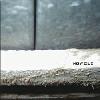 Vivo is a primarily electronic label based in Poland with six releases to date, including the recommended Black Faction remix album 'Reworked.' With this compilation, they present 49 minutes worth of "narrative sonic stories," ("nowele" is Polish for "short stories") by little known but impressive artists from the US, Poland and Japan. "Uruk," by Maciek Szymczuk sets a rhythmic foundation of pops and gelatinous warbles as a lucid two note ping makes for melody.
Vivo is a primarily electronic label based in Poland with six releases to date, including the recommended Black Faction remix album 'Reworked.' With this compilation, they present 49 minutes worth of "narrative sonic stories," ("nowele" is Polish for "short stories") by little known but impressive artists from the US, Poland and Japan. "Uruk," by Maciek Szymczuk sets a rhythmic foundation of pops and gelatinous warbles as a lucid two note ping makes for melody.
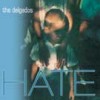 It's simply amazing what a band can accomplish when they trulycollaborate. The Delgados had released three proper albums, includingthe brilliant The Great Eastern,when they were asked to contribute the soundtrack to a film ofpaintings. The film, by an artist named Joe Coleman, was violent,brutal even. As the first time the band had written music togetherwithout the benefit of Alun Woodward or Emma Pollock's lyrics, it, too,was a brutal experience. It was rewarding, however, as it showed theband how beautiful their music could be without words. It's surprisingthat the people who signed Mogwai wouldn't have tried this before now,but they were then set to make some of the most beautiful music oftheir lives. It's not that instrumental was where they needed to go,but the music had to come first this time, and so it does on Hate, easily their best work yet by miles. By the band's own admission, where Easternwas a great record, it was brought about because producer Dave Fridmannwas able to bring commonalities together in the mixing process. Themusic was actually frighteningly disparate, because different memberswrote different pieces. Fridmann is with them again on Hate,but this time he had less to do, as the band had a unified vision tostart. It's a gorgeous vision, too, as the band makes the most movingmusic they've ever mustered. From "The Light Before We Land," Pollockis in rare form lyrically and vocally, as the music swells and buildsaround her, almost engulfing her. Woodward then updates the Beatles on"All You Need is Hate," a casual admission of the strong emotion we allhave and need to examine more. In order to find the positivity, absorbthe negativity, and you will find what you lack. Not a new statement,but a great way to say it, as the band sounds like they're enjoying anew playful and experimental side. All over the disc, The Delgados playwith effects and glitches, echoes and strings, faded vocal trails andodd sounds that twist your ears a bit. Where they truly succeed is whenthey slow it down and break it down. "Coming in From the Cold," and"Child Killers" are the album's middle, its core, and its two besttracks. After that, it's classic Delgados, just better and morecoherent. "Favours," and "Never Look at the Sun" have that energy seenon Eastern matched with the complete meld of their new sound,and it works on so many levels. Even Woodward's singing has improved,as he gets more comfortable in his delivery. The US release alsocontains two bonus tracks recorded at the same time but not on the UKrelease. It's their best, that much is true, but something tells meit's just gonna get better.
It's simply amazing what a band can accomplish when they trulycollaborate. The Delgados had released three proper albums, includingthe brilliant The Great Eastern,when they were asked to contribute the soundtrack to a film ofpaintings. The film, by an artist named Joe Coleman, was violent,brutal even. As the first time the band had written music togetherwithout the benefit of Alun Woodward or Emma Pollock's lyrics, it, too,was a brutal experience. It was rewarding, however, as it showed theband how beautiful their music could be without words. It's surprisingthat the people who signed Mogwai wouldn't have tried this before now,but they were then set to make some of the most beautiful music oftheir lives. It's not that instrumental was where they needed to go,but the music had to come first this time, and so it does on Hate, easily their best work yet by miles. By the band's own admission, where Easternwas a great record, it was brought about because producer Dave Fridmannwas able to bring commonalities together in the mixing process. Themusic was actually frighteningly disparate, because different memberswrote different pieces. Fridmann is with them again on Hate,but this time he had less to do, as the band had a unified vision tostart. It's a gorgeous vision, too, as the band makes the most movingmusic they've ever mustered. From "The Light Before We Land," Pollockis in rare form lyrically and vocally, as the music swells and buildsaround her, almost engulfing her. Woodward then updates the Beatles on"All You Need is Hate," a casual admission of the strong emotion we allhave and need to examine more. In order to find the positivity, absorbthe negativity, and you will find what you lack. Not a new statement,but a great way to say it, as the band sounds like they're enjoying anew playful and experimental side. All over the disc, The Delgados playwith effects and glitches, echoes and strings, faded vocal trails andodd sounds that twist your ears a bit. Where they truly succeed is whenthey slow it down and break it down. "Coming in From the Cold," and"Child Killers" are the album's middle, its core, and its two besttracks. After that, it's classic Delgados, just better and morecoherent. "Favours," and "Never Look at the Sun" have that energy seenon Eastern matched with the complete meld of their new sound,and it works on so many levels. Even Woodward's singing has improved,as he gets more comfortable in his delivery. The US release alsocontains two bonus tracks recorded at the same time but not on the UKrelease. It's their best, that much is true, but something tells meit's just gonna get better.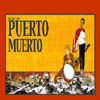 This is a soundtrack to a movie that doesn't exist. It's a movie filledwith adventure, romance, and regret as swashbuckling privateers sailthe seven seas, coming to port just long enough to break a few heartsand make a few mistakes. The sailor's life is at once glorified, as in"Jean Lafitte," a rollicking sing-a-long sea shanty wherein the titlecharacter spins yarns about his eventful life as a sailor, and alsolamented. "Go Home," asks "Where do you go when it's closing in onsupper time," already knowing the answer when it responds "Wrap yourthings inside your rag and go." The sea serves as both an escape and aprison, as the sailor of "Streets of Marseilles," running from apainful heartbreak, finds himself shanghaied and regretting the actionsthat led to the sea, and his fate. Puerto Muerto captures the essenceof these tales with spare instrumentation, heavy drums and a staccatostrummed acoustic guitar that add a depth and darkness to the sound.Husband and wife Tim Kelley and Christa Meyer share vocal duties,bringing to their respective songs their own nuances that make themspecial. These are folk ballads, meant to be shared and spread as faras they can go, through every port you pass through. The joyous energyand sorrowful emotion of these songs are absolutely entrancing, seizingon childhood fantasies of adventure while touching on the sad realitiesof a wanderer's life. Your Bloated Corpse... will have you piecing the scenes to that nonexistent movie together in your imagination.
This is a soundtrack to a movie that doesn't exist. It's a movie filledwith adventure, romance, and regret as swashbuckling privateers sailthe seven seas, coming to port just long enough to break a few heartsand make a few mistakes. The sailor's life is at once glorified, as in"Jean Lafitte," a rollicking sing-a-long sea shanty wherein the titlecharacter spins yarns about his eventful life as a sailor, and alsolamented. "Go Home," asks "Where do you go when it's closing in onsupper time," already knowing the answer when it responds "Wrap yourthings inside your rag and go." The sea serves as both an escape and aprison, as the sailor of "Streets of Marseilles," running from apainful heartbreak, finds himself shanghaied and regretting the actionsthat led to the sea, and his fate. Puerto Muerto captures the essenceof these tales with spare instrumentation, heavy drums and a staccatostrummed acoustic guitar that add a depth and darkness to the sound.Husband and wife Tim Kelley and Christa Meyer share vocal duties,bringing to their respective songs their own nuances that make themspecial. These are folk ballads, meant to be shared and spread as faras they can go, through every port you pass through. The joyous energyand sorrowful emotion of these songs are absolutely entrancing, seizingon childhood fantasies of adventure while touching on the sad realitiesof a wanderer's life. Your Bloated Corpse... will have you piecing the scenes to that nonexistent movie together in your imagination.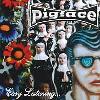 I've always liked Pigface and, often, loved them because of the thingsthat set them apart from the legions of look-a-like and sound-a-likeindustrial-rock clones: a forever fluid membership (including manyfemales), variety, groove and an actual sense of humor.Drummer/producer Martin Atkins is rightfully proud of his 12-year-oldbaby—an unruly child with multiple personality disorder—and this timearound there's over 40 others, old and new, helping him feed, diaperand discipline it. All of the 13 tracks are restrained to the three- tofour-minute range (only one exceeds five minutes) and I can't help butnotice that most of the ones I dislike are the ones in which Atkins hasno writing credit. Even though there aren't really rules as to what isand what isn't "Pigface", about half of this album is run-of-the-millor out of place and just doesn't feel like Pigface to me.
I've always liked Pigface and, often, loved them because of the thingsthat set them apart from the legions of look-a-like and sound-a-likeindustrial-rock clones: a forever fluid membership (including manyfemales), variety, groove and an actual sense of humor.Drummer/producer Martin Atkins is rightfully proud of his 12-year-oldbaby—an unruly child with multiple personality disorder—and this timearound there's over 40 others, old and new, helping him feed, diaperand discipline it. All of the 13 tracks are restrained to the three- tofour-minute range (only one exceeds five minutes) and I can't help butnotice that most of the ones I dislike are the ones in which Atkins hasno writing credit. Even though there aren't really rules as to what isand what isn't "Pigface", about half of this album is run-of-the-millor out of place and just doesn't feel like Pigface to me."Mind Your Own Business" and "Sweetmeat" prove that you can write coolsongs about anything, even privacy via a "can I have a taste of yourice cream?" metaphor and unfortunate encounters with animals."Insect/Suspect" is an instant classic with bash and crash drums, KeithLevene-esque guitar (he actually appears on another track) by Kittie'sFallon Bowman and Hate Dept's Seibold and Chris Connelly trading offverse and chorus vocals. "Closer To Heaven" is the "hit" as it were,dripping with sitars and underpinned by Charles Levi's liquid bassline. Thrill Kill Kult's Groovie Mann is backed by Nocturne's LaceyConner in refrains of "I'm closer to heaven when I'm with you, I'mcloser to heaven without you." "Du Liebst Mich Nicht, Ich Lieb' DichNicht," ("You Love Me Not, I Love You Not") sees the successful returnof En Esch for another German language sing-a-long. In "Miss SwayAction," Connelly croons poetry over a lo-fi synth and percussionsetting by Machines of Loving Grace/Stabbing Westward alumnus DavidSuycott. That leaves all the rest: heavies dabbling in industrial rockand metal clichés (some of these will be fun live), a cyberpunk spokenword piece by Jared Louche, drum 'n bass filler and a vaguely amusingaddition to the "fucks" list led by the talking half of Penn &Teller. The "United" North American tour featuring Pigface, My LifeWith the Thrill Kill Kult, Zeromancer and Bile will hit the road inmid-March.
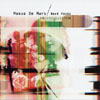 In the years between this collection being first announced until thetime of its release (this past week), almost anybody could haveprobably tracked down the out of print recordings contained herein.With that in mind, I can't deny that I'm somewhat jaded about therelease before even possessing it. Now that it's in my hands, I'mrelieved to finally have it, excited as a longtime fan, but stillsomewhat put off by its posturing as an EP collection, as it neglectssome songs from the original EPs and was arranged in a nonsensicalrandom order. On the surface, Mouse On Mars have always appeared to benonsensical (just pick up any album of theirs and look at the songtitles!). However, the music has always been cold-calculated, withstrong tendencies to avoid the trends that have come and gone sincethey started releasing music back in 1994. For this, the duo of Tomaand St. Werner have perpetually remained ahead of the curve. They couldhave easily jumped on bandwagons of drum 'n bass or glitch, but as thetrends became more minimal, more was added to their sound. They heldtheir ground with music that was always dancable and rich withcaptivating melodies and unique sounds from song to song. Starting in1994 with the FroschEP, the duo are clearly observably unwilling to accept pre-packagedpreset sounds and pre-programmed beats. While appearing on compilationslike Trance Europe ExpressBib EP, with songs like "Selektron," slower than what they were used to doing before, but never dull at any point. By 1997's Cache Coeur NaifEP, the band has kept the beat intact, bottomed it out with arump-shaking intensity, added the vocals of Stereolab's LaetitiaSadier, and found a way to mangle original sounds of guitars and basickeyboards beyond original recognition while still maintaining a sexycatchiness. If this isn't considered intelligent dance music, then Idon't know what to think. With the most recent recording on this discnow six years old, the music has held up amazingly well compared to themusic of many of MoM's contemporaries.
In the years between this collection being first announced until thetime of its release (this past week), almost anybody could haveprobably tracked down the out of print recordings contained herein.With that in mind, I can't deny that I'm somewhat jaded about therelease before even possessing it. Now that it's in my hands, I'mrelieved to finally have it, excited as a longtime fan, but stillsomewhat put off by its posturing as an EP collection, as it neglectssome songs from the original EPs and was arranged in a nonsensicalrandom order. On the surface, Mouse On Mars have always appeared to benonsensical (just pick up any album of theirs and look at the songtitles!). However, the music has always been cold-calculated, withstrong tendencies to avoid the trends that have come and gone sincethey started releasing music back in 1994. For this, the duo of Tomaand St. Werner have perpetually remained ahead of the curve. They couldhave easily jumped on bandwagons of drum 'n bass or glitch, but as thetrends became more minimal, more was added to their sound. They heldtheir ground with music that was always dancable and rich withcaptivating melodies and unique sounds from song to song. Starting in1994 with the FroschEP, the duo are clearly observably unwilling to accept pre-packagedpreset sounds and pre-programmed beats. While appearing on compilationslike Trance Europe ExpressBib EP, with songs like "Selektron," slower than what they were used to doing before, but never dull at any point. By 1997's Cache Coeur NaifEP, the band has kept the beat intact, bottomed it out with arump-shaking intensity, added the vocals of Stereolab's LaetitiaSadier, and found a way to mangle original sounds of guitars and basickeyboards beyond original recognition while still maintaining a sexycatchiness. If this isn't considered intelligent dance music, then Idon't know what to think. With the most recent recording on this discnow six years old, the music has held up amazingly well compared to themusic of many of MoM's contemporaries. With his band Kinski, guitarist Chris Martin engages in noisy,concussive, and layered rock that dwarves most standard rock with itsmassive weight and intensity. Under his solo moniker, Ampbuzz, Martintakes the spirit of his Kinski work and uses it to create a patient,meditative album that is every bit as intricate and powerful. As soonas the opening track "Bubbles" begins, it is clear that This is My Ampbuzzis thematically centered around ocean imagery, and the shifting droneof the album evokes this concept perfectly. Not a single element seemstagged on; every buzz, layer, and loop seems to reinforce the dark,fluid tone of the album. "Center for Clouds" begins with a deep rushinglike water against your eardrums, then builds around an ebbing two notebass line that's surrounded by static gusts and washes, giving thesensation of bobbing up and down in ocean waves. "Soft Currency"follows with a shimmering drone that is interrupted by a frothing,churning noise that sounds like a struggling scuba diver's regulator ora fish tank filter's last gasp. "Diving Instructions" is a sustained,foreboding track full of reversed cymbal hits and sonic jetsam thatleads into the panic pulse of "Welcome to the Ocean Floor." The descentis complete, and a deep, resonant buzz overtakes the scene. It'sdisorienting and unsettling, as the sound moans and oscillates just outof sight. The final track, "Underwater Bomb," doesn't explode into afury, but instead releases the built up tension of the precedingpieces. This is My Ampbuzz is a fully-rendered, fully-realizedlistening experience that manages to vividly capture an image, from theglistening beauty of the surface to the chilling, claustrophobicdepths.
With his band Kinski, guitarist Chris Martin engages in noisy,concussive, and layered rock that dwarves most standard rock with itsmassive weight and intensity. Under his solo moniker, Ampbuzz, Martintakes the spirit of his Kinski work and uses it to create a patient,meditative album that is every bit as intricate and powerful. As soonas the opening track "Bubbles" begins, it is clear that This is My Ampbuzzis thematically centered around ocean imagery, and the shifting droneof the album evokes this concept perfectly. Not a single element seemstagged on; every buzz, layer, and loop seems to reinforce the dark,fluid tone of the album. "Center for Clouds" begins with a deep rushinglike water against your eardrums, then builds around an ebbing two notebass line that's surrounded by static gusts and washes, giving thesensation of bobbing up and down in ocean waves. "Soft Currency"follows with a shimmering drone that is interrupted by a frothing,churning noise that sounds like a struggling scuba diver's regulator ora fish tank filter's last gasp. "Diving Instructions" is a sustained,foreboding track full of reversed cymbal hits and sonic jetsam thatleads into the panic pulse of "Welcome to the Ocean Floor." The descentis complete, and a deep, resonant buzz overtakes the scene. It'sdisorienting and unsettling, as the sound moans and oscillates just outof sight. The final track, "Underwater Bomb," doesn't explode into afury, but instead releases the built up tension of the precedingpieces. This is My Ampbuzz is a fully-rendered, fully-realizedlistening experience that manages to vividly capture an image, from theglistening beauty of the surface to the chilling, claustrophobicdepths. 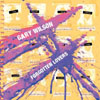 Those captivated by the skeezy sound of the Gary Wilson are in for atreat, as enough songs have been uncovered for a second album ofmaterial previously unavailable on compact disc. For those who don'thave last year's awesome reissue of You Think You Really Know Me,Wilson was man who simply wasn't afraid to say exactly what's on hismind, and it's mostly about trying to get into a girl's pants.Unsurprisingly, this context is backed by the sound of when low budgetporn and Christmas decorations crash in a tavern with upturnedbarstools and regulars passed out in their own cigarette ashes. Theresult is actually amazingly catchy, with slick bass riffs, cleverdrumming and the piano and keyboard work of a dedicated talent. Thisdisc collects a variety of scarce singles and B-sides, and aged demos,with loads of pictures and detailed accounts of the years, places andthe age of Wilson when the tunes were recorded. Included are a fewinstrumental soundtracky jazz jams, like the brilliant "AnotherGalaxy," to adventurous, stream-of-consciouness tunes like "You Took MeOn a Walk Into My Mirror." This would never have been a follow-up tohis other album, originally released in 1978, but, as the titlesuggests, a selection of songs for numerous love desires, longforgotten over time. Judging from the liner notes and story aboutWilson returning to his parents home last year, there's still morestuff yet to resurface. I'm completely hooked and will certainly bewaiting. -
Those captivated by the skeezy sound of the Gary Wilson are in for atreat, as enough songs have been uncovered for a second album ofmaterial previously unavailable on compact disc. For those who don'thave last year's awesome reissue of You Think You Really Know Me,Wilson was man who simply wasn't afraid to say exactly what's on hismind, and it's mostly about trying to get into a girl's pants.Unsurprisingly, this context is backed by the sound of when low budgetporn and Christmas decorations crash in a tavern with upturnedbarstools and regulars passed out in their own cigarette ashes. Theresult is actually amazingly catchy, with slick bass riffs, cleverdrumming and the piano and keyboard work of a dedicated talent. Thisdisc collects a variety of scarce singles and B-sides, and aged demos,with loads of pictures and detailed accounts of the years, places andthe age of Wilson when the tunes were recorded. Included are a fewinstrumental soundtracky jazz jams, like the brilliant "AnotherGalaxy," to adventurous, stream-of-consciouness tunes like "You Took MeOn a Walk Into My Mirror." This would never have been a follow-up tohis other album, originally released in 1978, but, as the titlesuggests, a selection of songs for numerous love desires, longforgotten over time. Judging from the liner notes and story aboutWilson returning to his parents home last year, there's still morestuff yet to resurface. I'm completely hooked and will certainly bewaiting. -  Austrian label Laton together with Vienna-based journalist's collectiveRedaktionsbuero have put out this thirteen track compilation ofelectronic music packaged together with a sort of tabloid publicationcontaining 12 pages of text relating to the music and two poster-sizedx-ray images of electronic equipment. The CD includes contributionsfrom Benzo, Pan Sonic, Pomassl, Fon, Alva Noto, Alexei Borisov,Thilges3, Auxpan, Terre Thaemlitz, Mira Calix, Udo Wid, Tommi Grönlund& Petteri Nisunen, and CM von Hausswolff. The presentation makes itclear that the paper document is to be taken at least as seriously asthe digital one. At first I was pleased with the whole thing: it's anice size, has something to read and some nice pictures bigger eventhan in a gatefold LP. However, with the exception of Alexej Borisov'sinteresting account of the Russian music scene, the essays are verydisappointing—variously banal, vacuous and old ideas dressed up inirritatingly self-aggrandizing language. The CD itself is a mixed bagand as such the high points stand out. Pan Sonic provide a powerful,visceral layering of hum and buzz; Noto's piece is a haunting,throbbing soundscape ornamented with pretty electro-gestures drenchedin reverb; and Thaemlitz's fascinating composition combines trashylooped disco samples with potently inhuman synthetic sounds, machinenoises and calculated sequences that make a dramatic and disturbingcontrast with the pop music backdrop. For me, it functions as a rathereffective indictment of the easy—and vaguely cowardly—abstraction ofsome of the music on this CD and so popular now elsewhere. Too much ofthe rest of the music relies on hackneyed, clicky rhythmicconstructions or on conventional forms executed with insufficient tasteor skill. I suspect that the musicians are less to blame for this thanthe compilers since for some of them we know that in other contextstheir music can be of value. The stand out winner for me is the threeminute "Til," by young Icelandic newcomer Elvar Már Kjartans akaAuxpan. Sounding a bit like "Kytkenta - Connection," from Vainio's KajaCD, it is a beautiful ripping noise, evoking the power of electricityto move, burn and destroy. This is one of those extremely rare andexceptional pieces of music that is so satisfying that it can turn yourday around.
Austrian label Laton together with Vienna-based journalist's collectiveRedaktionsbuero have put out this thirteen track compilation ofelectronic music packaged together with a sort of tabloid publicationcontaining 12 pages of text relating to the music and two poster-sizedx-ray images of electronic equipment. The CD includes contributionsfrom Benzo, Pan Sonic, Pomassl, Fon, Alva Noto, Alexei Borisov,Thilges3, Auxpan, Terre Thaemlitz, Mira Calix, Udo Wid, Tommi Grönlund& Petteri Nisunen, and CM von Hausswolff. The presentation makes itclear that the paper document is to be taken at least as seriously asthe digital one. At first I was pleased with the whole thing: it's anice size, has something to read and some nice pictures bigger eventhan in a gatefold LP. However, with the exception of Alexej Borisov'sinteresting account of the Russian music scene, the essays are verydisappointing—variously banal, vacuous and old ideas dressed up inirritatingly self-aggrandizing language. The CD itself is a mixed bagand as such the high points stand out. Pan Sonic provide a powerful,visceral layering of hum and buzz; Noto's piece is a haunting,throbbing soundscape ornamented with pretty electro-gestures drenchedin reverb; and Thaemlitz's fascinating composition combines trashylooped disco samples with potently inhuman synthetic sounds, machinenoises and calculated sequences that make a dramatic and disturbingcontrast with the pop music backdrop. For me, it functions as a rathereffective indictment of the easy—and vaguely cowardly—abstraction ofsome of the music on this CD and so popular now elsewhere. Too much ofthe rest of the music relies on hackneyed, clicky rhythmicconstructions or on conventional forms executed with insufficient tasteor skill. I suspect that the musicians are less to blame for this thanthe compilers since for some of them we know that in other contextstheir music can be of value. The stand out winner for me is the threeminute "Til," by young Icelandic newcomer Elvar Már Kjartans akaAuxpan. Sounding a bit like "Kytkenta - Connection," from Vainio's KajaCD, it is a beautiful ripping noise, evoking the power of electricityto move, burn and destroy. This is one of those extremely rare andexceptional pieces of music that is so satisfying that it can turn yourday around. - Pan Sonic - Eriö-Osuus
- Terre Thaemlitz - TGA Prototype
- Auxpan - Til
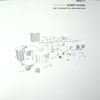 The title track of this three-song EP makes for an awesome continuation of the crisp, groove-driven compositions of 2002's Every Day,which incorporated a full live band rather than relying as heavily onsampled rhythm sections and re-mixing as previous releases. The upbeatand lyrically positive Horizon features the soulful singing ofNiara Scarlett (who also co-wrote the tune) backed by the group'sdriving, latin-jazz inspired rhythm section. Voiced mainly by a Rhodespiano, the band's grooves shift comfortably and dig deep throughoutdifferent sections of the tune. "Oregon" features the duo of bandleader J. Swinscoe and saxophonist Tom Chant for a composition whichoriginates as a sombre, repetitive chord progression from the keyboardthat builds into multiple layers of soprano sax, bass clarinet andwhirring electronic effects. Closing out the EP, and taking up theentire second side if you get the vinyl, is the six-and-a-half minutePatrick Carpenter (aka PC/Mr. P) re-mix, "Evolution II," which uses theoutstanding Fontella Bass vocal track from "Evolution" as its center.Opening with some spacious string swells and drones, the tune kicksinto a burning, jazzy groove to back the vocals and eventually draw ina slightly distorted sub-bass line to fill it all out. Carpenter'skeyboards and re-mixing have the vocals sounding even better in thiscontext than in the notable original. This EP is well worth hearing,even for this track alone.
The title track of this three-song EP makes for an awesome continuation of the crisp, groove-driven compositions of 2002's Every Day,which incorporated a full live band rather than relying as heavily onsampled rhythm sections and re-mixing as previous releases. The upbeatand lyrically positive Horizon features the soulful singing ofNiara Scarlett (who also co-wrote the tune) backed by the group'sdriving, latin-jazz inspired rhythm section. Voiced mainly by a Rhodespiano, the band's grooves shift comfortably and dig deep throughoutdifferent sections of the tune. "Oregon" features the duo of bandleader J. Swinscoe and saxophonist Tom Chant for a composition whichoriginates as a sombre, repetitive chord progression from the keyboardthat builds into multiple layers of soprano sax, bass clarinet andwhirring electronic effects. Closing out the EP, and taking up theentire second side if you get the vinyl, is the six-and-a-half minutePatrick Carpenter (aka PC/Mr. P) re-mix, "Evolution II," which uses theoutstanding Fontella Bass vocal track from "Evolution" as its center.Opening with some spacious string swells and drones, the tune kicksinto a burning, jazzy groove to back the vocals and eventually draw ina slightly distorted sub-bass line to fill it all out. Carpenter'skeyboards and re-mixing have the vocals sounding even better in thiscontext than in the notable original. This EP is well worth hearing,even for this track alone. 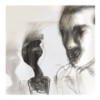 Pele have always produced instrumental music that stuns and impresses, their live shows are never to be missed, and 2000's The Nudeswas a solid record with practiced musicianship and quality melodies.They're also incredibly autonomous, as guitarist Chris Rosenau is atalented recording engineer, so they can record anywhere with littlefuss. Their music is also quite feral in nature, as though it is a wildanimal that needs taming. Pele don't make music, they attack it, andthe story is no different on Enemies. In fact, they've steppedup the violence and are going for broke. These songs have a psychoticenergy, a fervor, that drives them along at a breakneck pace but alsohas the good sense to take a break now and then. The lineup is the sameas The Nudes with one very nice addition in Jon Minor oncomputer. His contributions are what really make this album shine, asthe strange voices and wirey noises give this music a new edge on theold blade. Rosenau's guitar has a fairly similar tone to the one it'shad previously, and the band is as cohesive as ever, even with thestrangeness of Minor's contributions. "Crisis Win" opens the album withJon Mueller's manic drumming and hand claps, and just unleashes on theears for a full eight minutes. Elsewhere, "Hooves" and "HospitalSports" show a new ambient Pele, with Minor's computer talents at theforefront. The energy is what makes their music so compelling, though,as when it returns on "Hummingbirds Eat," you can't help but crank thevolume and get moving. "Cooking Light," a nine-minute shuffle closesthe album, and captures the beautiful improvisation of the band at itsbest. This album is an old friend, a warm blanket, the glove that fitsevery time. With Minor, Pele is a new and brave band with a lot ofground to cover.
Pele have always produced instrumental music that stuns and impresses, their live shows are never to be missed, and 2000's The Nudeswas a solid record with practiced musicianship and quality melodies.They're also incredibly autonomous, as guitarist Chris Rosenau is atalented recording engineer, so they can record anywhere with littlefuss. Their music is also quite feral in nature, as though it is a wildanimal that needs taming. Pele don't make music, they attack it, andthe story is no different on Enemies. In fact, they've steppedup the violence and are going for broke. These songs have a psychoticenergy, a fervor, that drives them along at a breakneck pace but alsohas the good sense to take a break now and then. The lineup is the sameas The Nudes with one very nice addition in Jon Minor oncomputer. His contributions are what really make this album shine, asthe strange voices and wirey noises give this music a new edge on theold blade. Rosenau's guitar has a fairly similar tone to the one it'shad previously, and the band is as cohesive as ever, even with thestrangeness of Minor's contributions. "Crisis Win" opens the album withJon Mueller's manic drumming and hand claps, and just unleashes on theears for a full eight minutes. Elsewhere, "Hooves" and "HospitalSports" show a new ambient Pele, with Minor's computer talents at theforefront. The energy is what makes their music so compelling, though,as when it returns on "Hummingbirds Eat," you can't help but crank thevolume and get moving. "Cooking Light," a nine-minute shuffle closesthe album, and captures the beautiful improvisation of the band at itsbest. This album is an old friend, a warm blanket, the glove that fitsevery time. With Minor, Pele is a new and brave band with a lot ofground to cover. 


